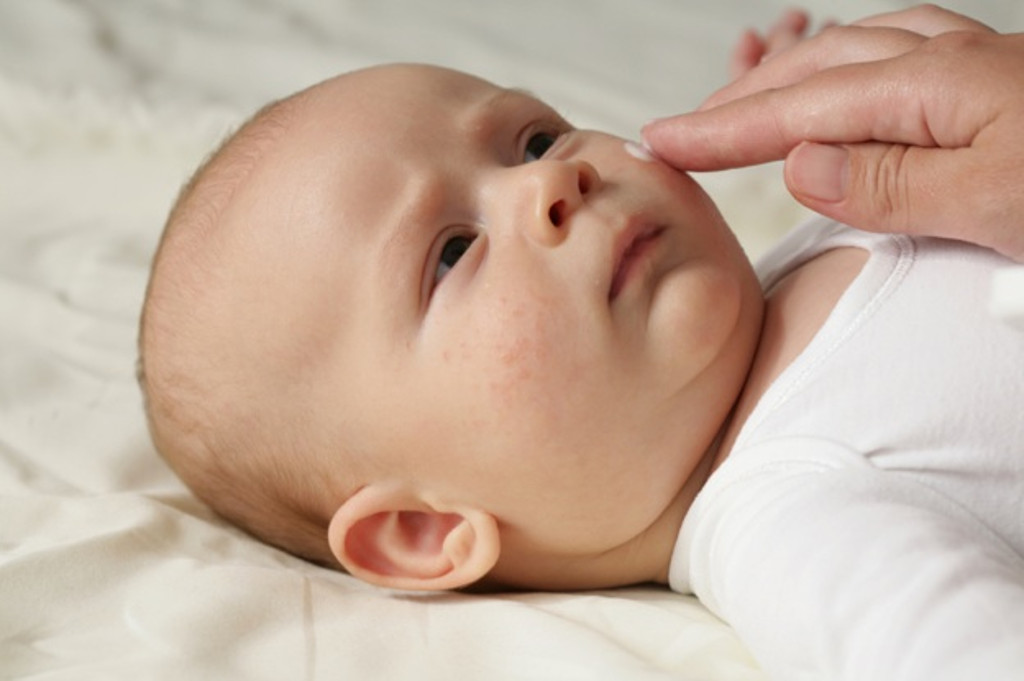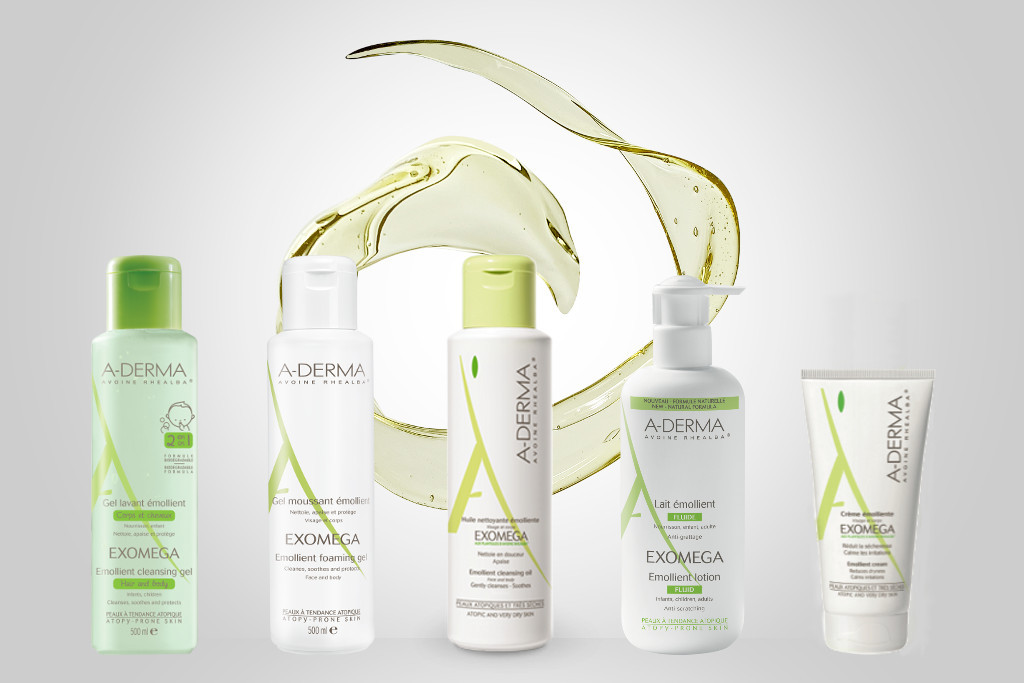SingaporeMotherhood | Parenting
March 2017
Eczema: 9 Things You Can Do to Calm Baby’s Dry and Itchy Skin

Do your children suffer from very dry skin or eczema that gives them angry and itchy rashes? Don’t fret – here’s what you can do to help them.
It’s the middle of the night and your baby has just woken up crying – again! – because her eczema has flared up and her skin is itching too much for her to sleep in peace. She’s scratching at her face and her hands. Her skin is red, irritated and rash-like. It’s the third time this has happened tonight and you’re ready to cry too.
#reallife #momlife
Your child’s paediatrician says she has something called atopic dermatitis, a kind of eczema that affects up to one in five children.
[banner][/banner]
How do you know if your child has it? Check her skin, especially on her face, hands, feet, the inside of the elbows, and behind the knees. It may be rough, red and dry, with rashes. And she won’t stop scratching. But don’t worry. No matter how bad it looks, there’s no need to keep the siblings away; atopic dermatitis is not contagious.
Atopic dermatitis commonly appears before a child is two years of age, but it can still appear any time after that. Many children who have atopic dermatitis may develop asthma and common childhood allergies like hay fever. The good news is that most kids grow out of it around puberty, although some continue to experience it throughout adulthood.
In the meantime, here’s what you can do to prevent frequent flare-ups and lessen your little one’s discomfort when an attack of the red, hot, itchy rashes occurs.

1. Wipe out Dust Mites at Home
The fewer allergens there are around your child, the less the chances are that she’ll have another eczema flare-up. Hot and humid Singapore is dust-mite heaven, and over 90 per cent of children treated at KKH Women’s and Children’s Hospital for eczema, allergic rhinitis or asthma are allergic to dust mites. What can you do to get rid of these allergens?
- Vacuum and mop regularly
- Wash kids’ bedding at a higher temperature (60 degrees Celsius)
- Remove carpets
- Get rid of stuffed toys
- Keep windows open as much as possible for air circulation and to prevent mould and mildew forming
2. Use Cotton Fabrics
Clothes made of 100 per cent cotton are best for sensitive skin. They allow the skin to breathe better, feel cooler, and are less likely to irritate. It’s the same for bedding and bed linen. If your little darling is sleeping for 12 hours a day, wouldn’t you want her to do so in non-irritating clothes and on non-irritating bedsheets?
3. Switch Your Laundry Detergent
Look for mild detergents that do not affect sensitive skin, or use those that are specially formulated for babies. Avoid fabric softeners. Launder Baby’s or the Kid’s clothes separately from adults’ clothes, so that there is no cross-contamination.
4. Be Smart about the Sun
Babies and young children have soft, delicate skin that can be prone to skin irritation. If they also have eczema, their skin is even more sensitive. Atopic dermatitis can be aggravated with exposure to heat and light so keep the kid out of direct sunlight during peak sunshine hours (11am to 4pm) as much as possible. If you have to be out, apply a suitable fragrance-free sunscreen.

5. Trim Those Tiny Nails
It’s hard to stop babies and younger children from scratching. But this could lead to infections and lots of discomfort for your little one: bleeding, scaling, swelling, crusting and ‘weeping’ fluid. So keep those tiny nails trimmed and filed regularly, at least twice a week (more if necessary). If it’s impossible to do it while she’s awake because she can’t stop wriggling, give Baby her ‘manicure’ while she’s asleep. And keep those mittens on!
6. Seek Medical Care
Don’t wait till the scratching leads to bleeding. If you suspect that your child’s rashes are caused by atopic dermatitis, bring her to the paediatrician. A mild case can be treated with emollient cream, ointment or a low-strength steroid cream. If an infection occurs, oral antibiotics and antibiotic creams may be prescribed.
7. Choose the Right Bath Cleansers
Chemicals such as soaps and artificial fragrances in shower gels and shampoos can trigger skin irritation in Baby’s delicate skin – just what we want to avoid. So when buying cleansers for babies and young children, look for those that are soap-free, sulfates-free and fragrance-free, such as A-DERMA’s EXOMEGA Emollient Cleansing Oil or Foaming Gel for face and body. These plant-based dermatological products have been recommended by healthcare professionals for over 20 years because they reduce dryness, relieve itching, and calm irritations.
8. Forget Long Baths, Take Short Showers Instead
Staying in the water for too long can cause skin to dry up (ironic, isn’t it?) so limit showers to five to 10 minutes, no longer. Secondly, use lukewarm, not hot water, as the latter can strip protective oils from skin. One way to speed things up when giving the little ones their showers? Use the new EXOMEGA 2-in-1 Emollient Cleansing Gel for hair and body. Just one squirt cleans from top to toe; no need to waste time fumbling with bottles!

9. Moisturise, Moisturise, Moisturise!
Of course, there are things you can do at home daily to help prevent flare-ups. The first line of defense? Moisturise, moisturise, moisturise (yes, just as we mums do) daily! Dermatologists recommend A-DERMA’s EXOMEGA range of emollient lotions and creams because it contains the Rhealba Oat® plantlet extract, an active ingredient that reduces inflammation. On top of that, the EXOMEGA range also includes Filaxerine®, omega-6 fatty acids, and vitamin B3 to protect the skin’s natural protective barrier – all good stuff to help keep our little ones’ skins soothed and smooth!
Here’s the best way to apply it for your child:
- Warm up the lotion or cream between the – very clean – palms of your hand
- Gently work it into your child’s skin with light massaging strokes
It’s been found that a parent’s gentle caress when massaging in the product can also add to the soothing effect of the product itself.
98 per cent of users with atopic dermatitis found their skin instantly soothed after applying EXOMEGA cream twice daily for three weeks. Wouldn’t you want this immediate and long-lasting relief for your child as well?
Try It Out!
A-DERMA products, including its EXOMEGA range, are available at the National Skin Centre, as well as Watsons and Guardian stores islandwide.
Giveaway!
For a chance to win a set of EXOMEGA Cleansing Oil and EXOMEGA Emollient Cream, here’s what you have to do:
- Like A-DERMA’s Facebook page @AdermaSingapore
- Follow A-DERMA on Instagram @aderma_singapore
- Comment on A-DERMA’s Facebook post, tagging friends and family you would like to win the products for
- Then sit tight, as 3 winners will be announced on 24 March, 2017!
Find Out More!
Visit www.aderma.com/en and ‘Like’ A-DERMA’s Facebook page to be the first to learn about product updates and giveaways.
This article was done in collaboration with A-DERMA.
All content from this article, including images, cannot be reproduced without credits or written permission from SingaporeMotherhood.
Follow us on Facebook, Instagram, and Telegram for the latest article and promotion updates.





